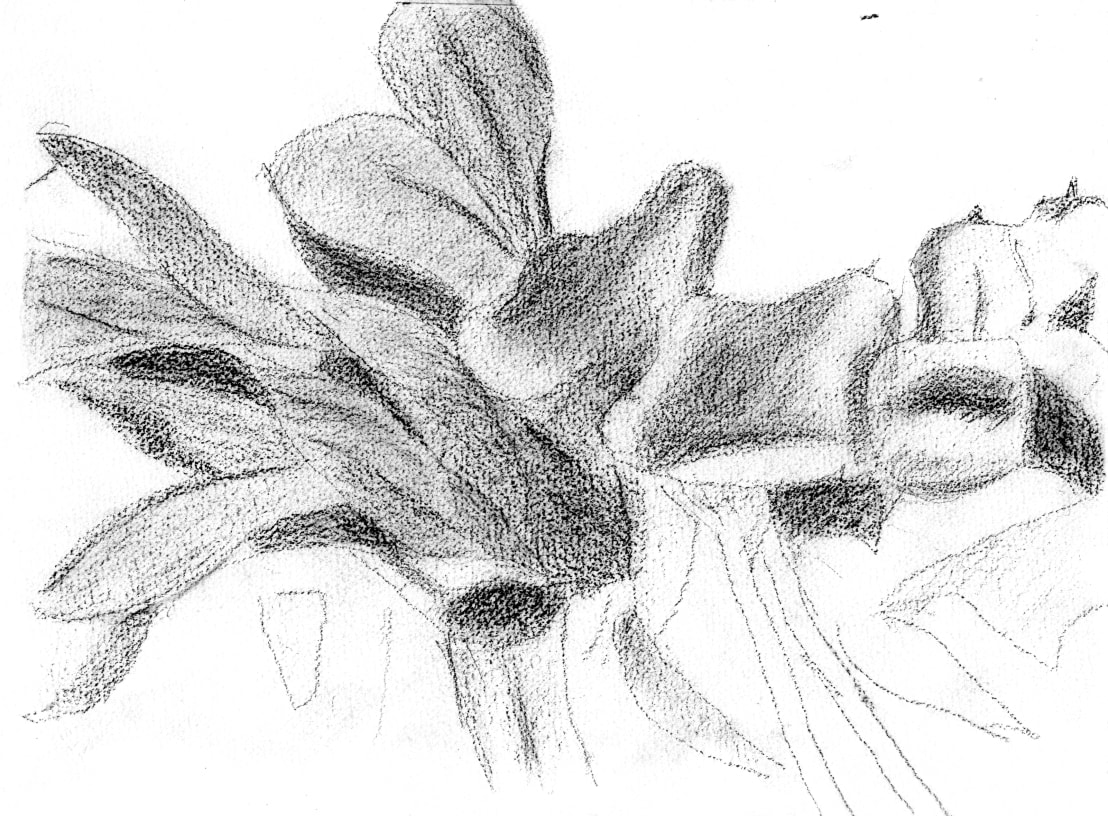

Overview
Underscoring Georg Baselitz’s unparalleled pictorial style, the artist's new series of large-scale paintings and drawings in the forthcoming exhibition Time represent an homage to Elke, his wife of nearly sixty years.
Underscoring Georg Baselitz’s unparalleled pictorial style, the artist's new series of large-scale paintings and drawings in the forthcoming exhibition Time represent an homage to Elke, his wife of nearly sixty years. An enduring source of inspiration for the artist throughout his career, she has accompanied the evolution of his artistic practice.
The thirty paintings and twenty drawings in the exhibition mark a new step in his artistic meditation on the passage of time, first addressed by the artist in 2015 with his series of Avignon self-portraits presented at the Venice Biennale. The combination of grace and severity in the new paintings dedicated to Elke represent a renewed declaration of love, as well as an intimate reflection on the inevitability of ageing and the function of portraiture. By taking his beloved as his subject matter in a series of portraits where the beautiful and the grotesque are intricately modulated, the works are reminiscent of those by Otto Dix, Lucas Cranach and Willem de Kooning.
Georg Baselitz has refined his painterly vocabulary through his focus on the fundamentals of the body form, and these figures seem to float in an undetermined space when seen from a distance. At times they appear iridescent, or almost indistinguishable from the background, as if dissolving into their surroundings. Conversely, when viewed closely, the canvases reveal an unprecedented variety of surface treatments and details. The use of gold mixed with paint gives a number of the works a cosmic dimension never before seen in Georg Baselitz’s work, bathing the figures in a soft light that seems to radiate from within.
In 1997 the Modern Art Museum of Fort Worth (Texas) organized an exhibition dedicated to the Portraits of Elke. Michael Auping, curator of this show, wanted to track the artist’s conceptual and stylistic developments through a single model, asserting than “the tradition of an extended dialogue between an artist and a specific model is a rich one in twentieth-century art (one immediately thinks of Picasso and Matisse) and the images of Elke are a provocative contribution to this tradition.”
In the Pantin exhibition, the figure of Elke is modulated in various ways. Several canvases incorporate abstract geometric areas that evoke the shape of a grand piano, recalling the classic typology of the portrait of a woman sitting at the piano. A series of double portraits on a pink background show sculptural figures in contorted poses that evoke the artist's interest in 16th century Florentine mannerism, a trait that was already found in the deformation and elongation of the members of his Heroes in the 1960s. An other series of double portraits recall the composition of Otto Dix's Portrait of Parents (1924), a painting which, in its crude vision of reality, influenced Baselitz’s perception and representation of the body. A set of paintings with even more indefinite outlines has been created by imprinting one canvas on another, as if the image were already ready to be erased.
The surface treatment of the canvasses reveals an infinity of details. The paint, paste-like in consistency, is applied with a spatula and wide brush and Baselitz uses sticks resembling reed-pens are used to create a wickerwork of lines by scratching through the layer of oil paint. The use of spray paint in many works allows the depicted figures to seemingly levitate in a landscape of clouds. At times, areas of frottage can be discerned, vaguely reminiscent of Max Ernst.
By revisiting his own work and integrating subtle references to art history, Baselitz offers a reflection on the meaning of painting itself. Kosme de Barañano, curator of the Baselitz Academy exhibition (on vie until 6 October 2019 at the Gallery dell'Accademia, Venice) concludes: "While portraits and nudes generally focus on the representation of visible reality, mimesis and proportion, at Baselitz they challenge the overall meaning of representation in painting. »
Galerie Thaddaeus Ropac's exhibition follows a number of international comprehensive solo-shows held on the occasion of the artist's 80th birthday last year: at the Beyeler Foundation in Riehen near Basel, the Hirshhorn Museum in Washington, D.C., and the Musée Unterlinden in Colmar, France. A major solo exhibition at Gallerie dell’Accademia in Venice, coinciding with this year’s Biennale, focuses on the series Das Negativ (2012) and Fingermalerei (first half of the 1970s) and remains on view until October 2019. This past June, Georg Baselitz gifted six paintings and two sculptures to the Pinakothek der Moderne in Munich. The works, which were conceived between 2008 and 2017, are displayed in a dedicated room in the museum.
The Centre Pompidou in Paris plans to host the artist's most extensive retrospective to date in the fall of 2020.

















































































































































































